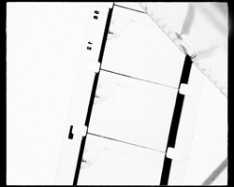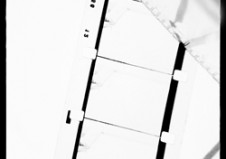Still Lives and Gradual Speed

Gradual Speed (Els van Riel)
Curator Juiie Murray in person!
Filmmaker Julie Murray (last hosted at Filmforum in 2010) was invited by us to curate a show for Filmforum, and here it is! Featuring the Los Angeles premiere of Els van Riel’s Gradual Speed, combined with some classic works by Chris Marker and Bruce Baillie that we hope will provoke a conversation.
For more event information:323-377-7238
Tickets: $10 general, $6 students/seniors; free for Filmforum members. Available by credit card in advance from Brown Paper Tickets at http://bpt.me/686005 or at the door.
Julie Murray is an Irish born artist and filmmaker making experimental films and videos in the US. Currently an adjunct professor at Cal Arts, her films include CONSCIOUS (1993), MICROMOTH. (2000), ORCHARD (2003), DETROIT PARK (2004), DELIQUIUM (2004), ELEMENTS (2008), YSBRYD (2008), and DISTANCE (2010). More at http://juliemurray.yolasite.com/
Chat écoutant la musique (Cat Listening to Music)
By Chris Marker, from Beastiary (1994, digital, 3 min)
Sprawled in self-contained repose on a synthesizer keyboard, his eyes mostly closing (though he is far from idle), Guillaume-en-Egypte abides in an enveloping warmth of twilit consciousness while the camera tours him and his surroundings, keeping time with a melody played on a piano. – Julie Murray
Little Girl
By Bruce Baillie (1966 16mm, color & b&w, sound, 9 min)
Academy Film Archive Restoration 2013
"This film by Bruce Baillie, completed in 1966 but unreleased until 2014, is contemporaneous with Castro Street, but is much more formally connected to All My Life or Still Life, also from the same year. In three sections with three different formal strategies, Baillie shares distilled moments of found natural beauty as he encountered them in the North Bay outside San Francisco. The first section features a study of plum blossoms, rendered in rich, multiple superimpositions that allow the white flowers to explode into a blizzard of visual complexity, framed by a panning shot of purple mountains. In the second section, Baillie allows us a furtive glimpse of the titular little girl, waving to cars with her dog on the side of the road, lost in her world and thoughts. Baillie’s framing remains unadorned, feeling no need to add to or take away from a beautiful piece of simple portraiture. The third section, of waterbugs on the surface of a pond, remind us how remarkable and sensitive Baillie's camerawork can be, as he observes their graceful dances, and the subtle light and water effects they produce by their movements." - Mark Toscano
Still Life
By Bruce Baillie (1966, 16mm, color, sound, 2 min)
An exquisitely pitched film comprising a single unedited take of a vase of cut flowers set on a table. All the action happens in the bright background as figures move about, passing to and fro, their shapes beautifully warped by the camera’s near-sighted focus. Voices can be heard, murmuring, puzzling over names and identities of persons in photographs they are evidently looking at but which we never see. – Julie Murray

Gradual Speed
Gradual Speed
By Els van Riel (2013, 16mm, b&w, 52 min.)
Los Angeles Premiere!
“Gradual Speed is a work on and for black and white 16mm film seen as matter and at the same time as a metaphor for everything we can not grasp.” -Els van Riel
For a film whose title describes the relatively simple mechanism used to create it, Els van Riel's 16mm film ushers a series of startling transfigurations which brilliantly engage the form in the extended time spent with people, animals, events and objects in whose company the filmmaker sketches larger philosophical concerns to do with love, fixity, representation and loss.
Carefully positioned, the camera begins on a single frame, the shutter held open, and then is imperceptibly increased in speed, quickening the frame rate and thus changing the exposure time for each successive frame, which eventually produces a visible moving image whose Keystone-Cops styled speed in turn changes, at length falling into step with real time.
van Riel was inspired to make the film in part by happening upon the account of Vladimir Shevchenko, one of the first photographers to witness the immediate and appalling consequences of the nuclear disaster at Chernobyl and to record them on a sensitive plate. The actual degree of that sensitivity was evident in the film he used, which, when processed, showed the characteristic effects of heavy radiation in the emulsion. He himself later succumbed to radiation poisoning.
van Riel notes, “It is this inextricable relationship that casts its long shadow across this musing film-sculpture, like an afterthought that reminds us that film is primarily a body that carries within it the light traces of other bodies, always balancing between appearing and disappearing”
These observations are manifested in the precision of her subject's endlessly renewed temporal adjustment, so that the imminent haste, for example, of her dozing mother, whose fidgeting over the long duration signifies much in it’s change of speed alone, becomes all we have ever needed to know about exposure tables and time's abstract passage.
It is this inward epiphany, rather than any dazzle on the screen that holds the greatest power to sway. – Julie Murray
Els van Riel lives and works in Brussels, Belgium. Studied photo- and cinematography, and worked as a photographer, editor and producer for various photo-, film-, video- and theater productions. Her films, video's and installations explore the impact of detailed changes in moment, movement, matter, light and perception. http://www.elsvanriel.be/
